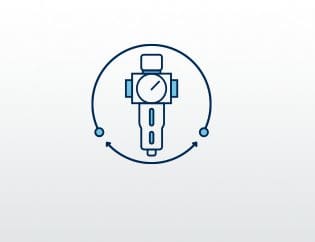Thrust Ball Bearings are designed to withstand axial loads but are not suitable for radial loads. To prevent sliding movements caused by centrifugal forces and gyroscopic moments between the balls and the raceways, these bearings must be subjected to a minimum axial load. Being separable, the internal and external washers can be mounted separately, simplifying installation and maintenance.
Thrust Bearings are also available in needle roller, cylindrical roller, tapered roller, and spherical roller versions. These variants offer higher load capacity and are ideal for applications requiring high thrust loads with minimal space requirements.
They are classified into two main types:
- Single-direction thrust bearings, designed to support axial loads in only one direction. They consist of a shaft washer (internal), a housing washer (external), and a cage assembly with balls or rollers.
- Double-direction thrust bearings, capable of withstanding axial loads in both directions. These bearings include an internal washer, two external washers, and two cage assemblies with rolling elements. The external washers can have flat or spherical support surfaces.
Applications
Due to their high load capacity and durability, thrust bearings are widely used in various industries, including:
- Mechanical industry
- Aerospace sector
- Automotive industry
- Wind energy sector
- Industrial handling
Thanks to their versatility and performance, thrust bearings are essential components in demanding applications, ensuring efficiency, durability, and high reliability.
In addition to the before and after-sales service, when you buy from us you have the guarantee of receiving an original component. Bianchi Industrial guarantees the origin of components coming from its distribution network with the Bianchi Original Components mark on packaging.




